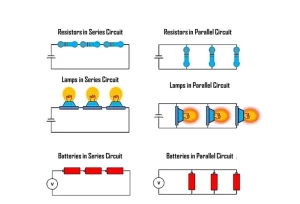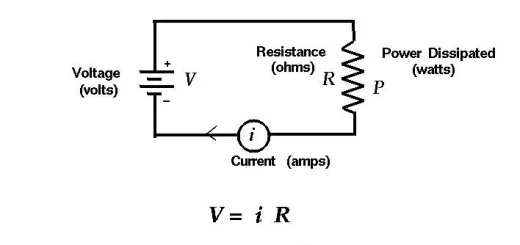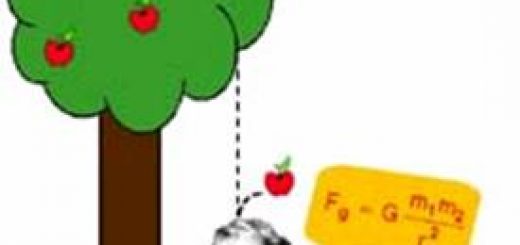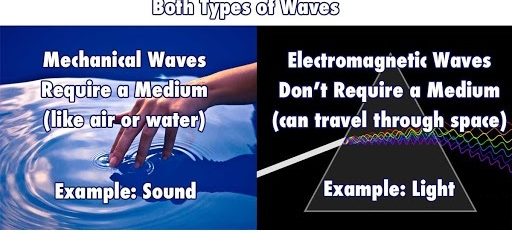Types of electric current, Direct and Alternating electric current, Series and parallel connection
The electromotive force of a battery whose cells are connected in series is greater than that one whose cells are connected in parallel because the total e.m.f for a group of cells connecting in series is equal to the sum of the e.m.f for these cells, while the total e.m.f for a group of cells connecting in parallel is equal to the e.m.f of one cell.
Sources of the electric current
Electricity plays an important role in our daily life. The electric current can be generated by two methods:
- Electrochemical cells: These are the cells in which the chemical energy is converted into electric energy. such as dry cells, and batteries, the type of the produced electric current is direct electric current.
- Electric generators (Dynamoes): They are devices in which mechanical (kinetic) energy is converted into electric energy. such as the dynamo (electric generator), the type of the produced electric current is alternating electric current.
Types of electric current
The electric current can be classified according to its direction and intensity in the conductors, into direct electric current, and alternating electric current.
Direct electric current
- Source: Electrochemical cells such as dry cells and batteries.
- Intensity: It has a constant intensity.
- Direction: It is unidirectional (It flows in one direction). [The electrons flow from one pole of the electrochemical cell passing through all the components of the circuit to the other pole].
- Transference: It can be transferred only for short distances.
- Change to another type: It cannot be converted into an alternating current.
- Uses: It is used in electroplating processes and operating some electric appliances.
- Direct electric current (D.C.): It is an electric current that has a constant intensity and flows in one direction in the electric circuit.
Alternating electric current
- Source: Electric generators such as dynamoes.
- Intensity: It has a variable intensity.
- Direction: It is variable in direction. [The electrons flow in one direction at the beginning, then start to flow in the opposite direction and this cycle is repeated many times with high speed].
- Transference: It can be transferred for short and long distances through wires.
- Change to another type: It can be converted into direct current.
- Uses: It is used in lighting houses and streets, and operating electric appliances.
- An alternating electric current (A.C.) is an electric current that has a variable intensity and flows in two opposite directions in the electric circuit.
The alternating current is preferred to the direct current because it can be transferred for long distances and it can be changed into a direct current.
The electric current produced from electric generators is used in lighting and operating electric appliances because it is an alternating current that is variable in both direction & intensity and it can be changed into a direct current.
Methods of connecting the cells in an electric circuit
Several electric cells are connected together to form what is known as a battery. There are two methods of connecting electric cells: Series connection and Parallel connection.
Series connection
The method of connection: The different poles are connected with each other as follows:
- The negative pole of the first cell with the positive pole of the second cell.
- The negative pole of the second cell with the positive pole of the third cell and so on.
Therefore: The positive pole of the first cell and the negative pole of the third cell are the two poles of the battery.
Parallel connection
The method of connection: The similar poles are connected with each other as follows:
- The positive poles of all cells are connected together with one end to act as a positive pole.
- The negative poles of all cells are connected together with one end to act as a negative pole.
Therefore, there will be one positive pole and one negative pole for the produced battery. The electric cell is represented by two straight parallel lines, the longer one represents the positive pole and the shorter one represents the negative pole instead of the battery symbol.
Measuring the electromotive force (e.m.f.)
The electromotive force (e.m.f.) of electric cells, when they are connected in series:
Procedures:
- Connect a voltmeter to an electric cell of e m.f equals 15 volt. Record the reading of the voltmeter (let it be E1). The reading of the voltmeter (E1)= 1.5 volt.
- Connect another similar cell to the first cell in series, Record the reading of the voltmeter in this case (let it be E2). The reading of the voltmeter (E2)= 3 volt. (E2) is twice E1.
- Connect another similar cell in series. Record the reading of the voltmeter in this case (let it be E3). The reading of the voltmeter (E3) = 4.5 volt. (E3) equals three times E1.
Conclusions:
The electromotive force of a group of different dry cells connected in series = the sum of the electromotive forces of these cells.
Ebattery = E1 + E2 + E3 + ………..
The electromotive force of a group of similar dry cells connected in series = the number of the cells (n) x the electromotive force of one cell.
Ebattery = n × E1
The relation between the electromotive force and number of similar electric cells connected in series is a direct relation. Some electric cells are connected in series in the electric circuit to obtain a battery, its e.m.f is high.
The electromotive force (e.m.f.) of electric cells has the same e.m.f, when they are connected in parallel:
Procedures:
- Connect a voltmeter to an electric cell of e.m.f equals 1.5 volt, Record the reading of the voltmeter (let it be E1). The reading of the voltmeter (E1) = 1.5 volt.
- Connect another similar cell to the first cell in parallel. Record the reading of the voltmeter in this case (let it be E2). The reading of the voltmeter (E2) = 1.5 volt.
- Connect another similar cell to the previous cells in parallel. Record the reading of the voltmeter in this case. (let it be E3). The reading of the voltmeter (E3) = 1.5 volt.
Conclusion: The e.m.f of a group of dry cells which are connected in parallel is equal to the e.m.f of one cell.
Ebattery = E1
Some electric cells are connected in parallel in the electric circuit to obtain a battery, the e.m.f of it is low. We connect dry cells in both series and parallel to obtain different values of e.m.f.
Guidelines to solve problems
In some electric circuits, the battery is formed of many cells, some of them are connected in series and others are connected in parallel, so the e.m.f of the battery can be measured by the following relation.
The e.m.f of the battery = e.m.f of cells connected in series + e.m.f of cells connected in parallel
Problems
A battery consists of three cells, the e.m.f of each cell is 3 volt. Calculate the electromotive force if the electrodes are connected in series, and in parallel.
Solution
- Cells connected in series, Ebattery = n × E1 = 3 × 3 = 9 volt.
- Cells connected in parallel, Ebattery = E1 = 3 volt.
Guidelines to solve problems in connecting cells
- The method of connection of three similar cells with each other, the e.m.f of each of them = E volt. (by knowing the e.m.f of the battery): If the e-m.f of the battery= the e.m.f of one cell. All of cells are connected in parallel.
- If the e.m.f of the battery > the e.m.f of one cell, and equals to the summation of the e.m.f of all cells. All of cells are connected in series.
- If the emf of the battery > the e.m.f of one cell, and < the summation of the e.m.f of all cells. The connection will be in two steps as follows:
- The cells are connected gradually in series until we reach the given value of e.m.f of the battery.
- The remaining cell is connected in parallel with one of the cells which is connected in series.
You can follow science online on Youtube from this link: Science online
You can download Science online application on google Play from this link: Science online Apps on Google Play
Electric resistance, Relation between Current intensity & Potential difference (Ohm’s law)
Properties of Electric current, Simple electric circuit, Current intensity & Potential difference
Electrical current, Potential difference, Electric resistance and Ohm’s law
Resistances connection (series & parallel), Electric energy and Electric power




